The new Range Rover

It's hard to understate the importance of this car. The fourth generation Range Rover marks the brand's irreversible shift into high gear and high style, finally cementing the iconic car's status as a true piece of luxury design.
The original Range Rover, launched in 1970, wasn't the world's first upmarket 4x4. However, it was the most influential, evolving slowly and graceful over three iterations to a position of unassailable superiority. Imitators came in their droves but it wasn't until the 90s that the market for luxury SUVs really started to take off as car-makers saw the serious profits to be made in building high and mighty. With popularity came a backlash, however, and the sheer size and inefficiency of the 4x4 made the vehicles a target for any number of grievances.
Designers and engineers have learnt fast. To make any kind of major impact, a new SUV needs to represent a quantum leap forward from its predecessor, slashing weight and improving efficiency, all without sacrificing the qualities of space, high-riding driving position and - in some cases - off-road ability.
The new Range Rover comes wrapped in a swathe of weight-saving data, so eager are its creators to demonstrate the many and varied ways it improves upon the past. The most critical stat is kilograms shed; this is not a small car, and the sybaritic stylings of its increasingly upper class clientele aren't exactly light on the pocket. So in order to up the ante on interior quality while also cutting curb weight, Land-Rover's engineers started with a clean sheet of aluminium, fashioning the bluff, architectural bodywork into a machine with solidity and strength while also saving an incredible 420kg over the outgoing model.
The design team, led by Gerry McGovern, have done a fine job of continuing the Range Rover line, retaining and refining the elements that made the car so recognisable while adding a modicum of sleekness.
The car is more rakish than Range Rovers of old, with a shallower glasshouse and swept-back front and rear lights. Inside, the cabin also builds upon the firm groundwork of the third generation machine to create a solid, almost nautical, appearance, defined by high quality materials, simple switchgear and a renewed focus on the space and amenities in the rear cabin.
Range Rover is now a truly luxurious car. While the original was never a strict utilitarian vehicle like contemporary Land-Rovers, the decades have seen the model march relentlessly upmarket, culminating in the latest machine.
It's highly likely the top spec cars will crest six figures when sales start in the new year, taking Land-Rover into uncharted territory, head to head with new rivals like Rolls-Royce. It goes without saying, however, that even with an abundance of leather, wood and craftsmanship, the Range Rover will still be a consummate off-road performer. We'll report back in due course once we've sampled the car.
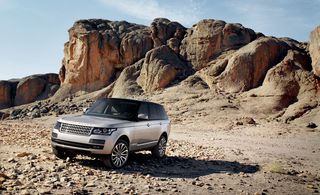
The new Range Rover comes wrapped in a swathe of weight-saving data, so eager are its creators to demonstrate the many and varied ways it improves upon the past
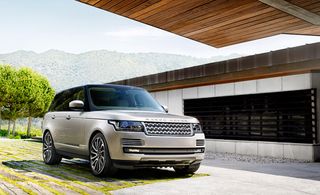
The most critical stat is kilograms shed: in order to up the ante on interior quality while also cutting curb weight, Land-Rover's engineers started with a clean sheet of aluminium, fashioning the bluff, architectural bodywork into a machine with solidity and strength while also saving an incredible 420kg over the outgoing model
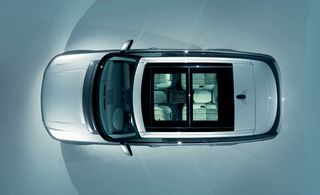
The design team, led by Gerry McGovern, have done a fine job of continuing the Range Rover line, retaining and refining the elements that made the car so recognisable while adding a modicum of sleekness
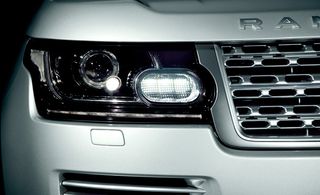
The car is more rakish than Range Rovers of old, with a shallower glasshouse and swept-back front and rear lights

Inside, the cabin also builds upon the firm groundwork of the third generation machine to create a solid, almost nautical, appearance, defined by high quality materials...
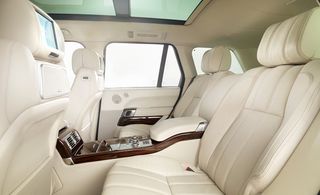
... and a renewed focus on the space and amenities in the rear cabin

It goes without saying, however, that even with an abundance of leather, wood and craftsmanship, the Range Rover will still be a consummate off-road performer

The new model comes with a sophisticated control panel
Wallpaper* Newsletter
Receive our daily digest of inspiration, escapism and design stories from around the world direct to your inbox
Jonathan Bell has written for Wallpaper* magazine since 1999, covering everything from architecture and transport design to books, tech and graphic design. He is now the magazine’s Transport and Technology Editor. Jonathan has written and edited 15 books, including Concept Car Design, 21st Century House, and The New Modern House. He is also the host of Wallpaper’s first podcast.
-
 The visual feast of the Sony World Photography Awards 2024 is revealed
The visual feast of the Sony World Photography Awards 2024 is revealedThe Sony World Photography Awards 2024 winners have been revealed – we celebrate the Architecture & Design category’s visual artists
By Ellie Stathaki Published
-
 Don’t Move, Improve 2024: London’s bold, bright and boutique home renovations
Don’t Move, Improve 2024: London’s bold, bright and boutique home renovationsDon’t Move, Improve 2024 reveals its shortlist, with 16 home designs competing for the top spot, to be announced in May
By Ellie Stathaki Published
-
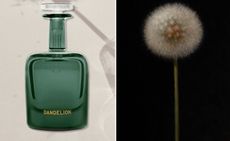 Perfumer H has bottled the scent of dandelions blowing in the wind
Perfumer H has bottled the scent of dandelions blowing in the windPerfumer H has debuted a new fragrance for spring, called Dandelion. Lyn Harris tells Wallpaper* about the process of its creation
By Hannah Tindle Published
-
 Peugeot’s sparky 308 gets hybrid power and handsome lines
Peugeot’s sparky 308 gets hybrid power and handsome linesThe Peugeot 308 proves that mass-market design needn’t be dull, blending hybrid power with sharp lines and excellent detailing
By Jonathan Bell Published
-
 BMW Motorrad brings out the big guns for its newest cruisers
BMW Motorrad brings out the big guns for its newest cruisersBMW Motorrad R 18 Bagger and Transcontinental set the tone for high-voltage cruising with a brand collaboration with speaker specialist Marshall
By George Chapman Last updated
-
 Dacia’s new Manifesto concept is a true outdoor utility vehicle
Dacia’s new Manifesto concept is a true outdoor utility vehicleUtilitarian auto brand Dacia sets a bold new agenda with its Manifesto, a concept car pitched at the active outdoor market
By Jonathan Bell Last updated
-
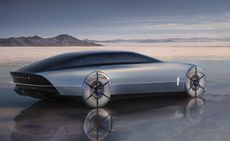 The sun sets on traditional supercars at California’s Monterey Car Week
The sun sets on traditional supercars at California’s Monterey Car WeekMonterey Car Week, the world’s most prestigious car gathering, is showcasing ever-more extravagant special editions, coachbuilt cars and all-new electric concepts. Here are seven key machines from 2022
By Rory FH Smith Last updated
-
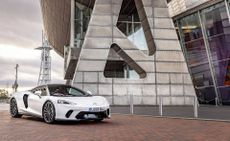 Is McLaren’s GT a sports car, a tourer, or the best of both?
Is McLaren’s GT a sports car, a tourer, or the best of both?The McLaren GT is a capable all-rounder dressed up in svelte supercar clothes. It might also be the last of its type
By Jonathan Bell Last updated
-
 Rolls-Royce puts the Phantom back on its lofty pedestal
Rolls-Royce puts the Phantom back on its lofty pedestalA mid-life refresh ensures the flagship Rolls-Royce Phantom Series II is at the top of its game, a last hurrah for traditional engines before an electrified future
By Jonathan Bell Published
-
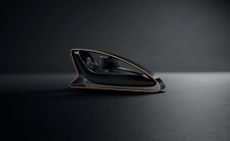 Prodrive’s new racing simulator is shaped by Callum to be front of the grid
Prodrive’s new racing simulator is shaped by Callum to be front of the gridThe racing simulator shapes up – this new design from Prodrive and Callum is honed for the high-end games room
By Jonathan Bell Last updated
-
 928 by Nardone Automotive: a restomod Porsche with Gallic verve and Italian style
928 by Nardone Automotive: a restomod Porsche with Gallic verve and Italian style928 by Nardone Automotive is a gracefully modernised version of Porsche’s endearingly different 928
By Jonathan Bell Last updated